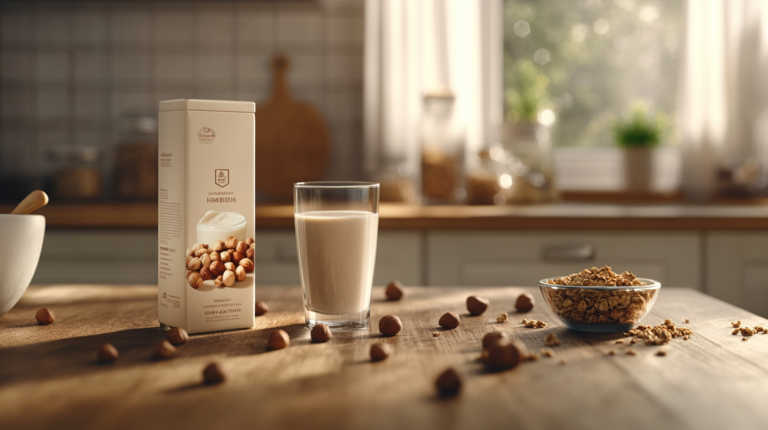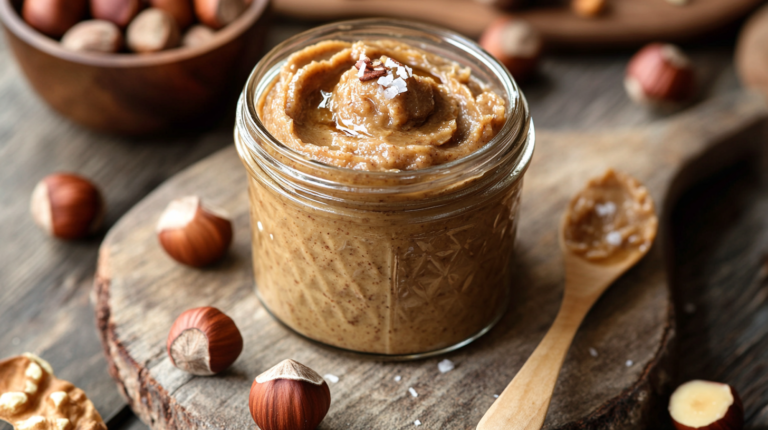How to Make Hazelnut Milk at Home: Health Benefits, Recipe, and Sustainability Insights
DIY Hazelnut Milk and Its Benefits
In recent years, hazelnut milk has gained popularity as a delicious and nutritious alternative to traditional dairy milk. This plant-based beverage not only offers a unique flavor profile but also boasts numerous health benefits and aligns with sustainable living practices. In this article, we will explore how to make hazelnut milk at home, delve into its health benefits, and examine why it has become a favored choice among health-conscious consumers.
The Rise of Hazelnut Milk
The plant-based milk market has seen significant growth, driven by increasing consumer demand for healthier and more environmentally friendly alternatives to dairy milk. Among the various options available, hazelnut milk stands out due to its distinctive taste and nutritional profile. The global hazelnut milk market was valued at USD 86 million in 2024 and is projected to reach USD 190 million by 2034, growing at a compound annual growth rate (CAGR) of 8.3%1. This growth is fueled by the increasing awareness of the health benefits associated with hazelnuts and the environmental advantages of their cultivation.
Making Hazelnut Milk at Home
Creating your own hazelnut milk is a simple and rewarding process. By making it at home, you can ensure that your beverage is free from preservatives and artificial additives. Here’s a basic recipe to get you started:
– Ingredients:
- 1 cup of raw hazelnuts
- 4 cups of water
- 1 teaspoon of vanilla extract (optional)
- A pinch of salt
- Sweeteners like dates or maple syrup (optional)
– Instructions:
- Soak the Hazelnuts: Place the hazelnuts in a bowl and cover them with water. Let them soak for at least 8 hours or overnight. This softens the nuts and makes them easier to blend.
- Drain and Rinse: After soaking, drain and rinse the hazelnuts thoroughly.
- Blend: Add the soaked hazelnuts and 4 cups of fresh water to a blender. Blend on high speed until the mixture is smooth and creamy.
- Strain: Pour the blended mixture through a nut milk bag or cheesecloth into a bowl or pitcher to separate the liquid from the pulp.
- Flavor: Add vanilla extract, salt, and any sweeteners if desired. Stir well.
- Store: Transfer the hazelnut milk to a sealed container and refrigerate. It will stay fresh for up to five days.
Tips: The leftover pulp can be used in baking or added to smoothies for extra fiber.
Health Benefits of Hazelnut Milk
Hazelnut milk is not only delicious but also packed with essential nutrients that contribute to overall health.
Nutritional Profile
Hazelnut milk is rich in vitamins B and E, magnesium, healthy fats, and antioxidants2. These nutrients offer several health benefits:
- Heart Health: The unsaturated fats in hazelnut milk can help maintain heart health by reducing bad cholesterol levels (LDL) and increasing good cholesterol (HDL)3.
- Bone Strength: Fortified versions of hazelnut milk provide calcium, which is essential for maintaining strong bones2.
- Skin Health: The antioxidants in hazelnut milk protect the skin from oxidative stress, promoting a healthy complexion12.
- Energy Production: Magnesium in hazelnut milk supports energy production and muscle function2.
Dietary Benefits
Hazelnut milk is naturally free from lactose, gluten, and animal products, making it suitable for vegans, those with lactose intolerance, or anyone seeking variety in their diet23.
Environmental Sustainability
One of the key drivers behind the popularity of hazelnut milk is its sustainability profile. Hazelnut farming generally requires less water compared to other nut-based milks like almond milk1. Additionally, hazelnuts have deep root systems that prevent soil erosion and improve soil health by enhancing water retention and nutrient cycling1. Furthermore, hazelnuts can sequester carbon from the atmosphere, potentially making their cultivation carbon-negative1.
Culinary Versatility
Hazelnut milk’s rich, nutty flavor makes it an excellent addition to various culinary applications:

- Coffee Drinks: Its creamy texture complements coffee beverages beautifully.
- Smoothies: Adds a nutty twist to fruit or green smoothies.
- Baked Goods: Enhances muffins, cakes, and bread with extra flavor.
- Savory Dishes: Can be used in soups or sauces that benefit from a nutty undertone.
Conclusion
As consumers increasingly seek healthier and more sustainable food options, hazelnut milk stands out as an excellent choice. Its unique combination of flavor, nutritional benefits, and environmental advantages makes it a compelling alternative to traditional dairy products. Whether you’re drawn to its gourmet taste or its eco-friendly profile, incorporating homemade hazelnut milk into your diet can be both enjoyable and beneficial for your health and the planet.
By making your own hazelnut milk at home, you can enjoy a fresh, preservative-free beverage while contributing positively to your well-being and environmental sustainability. As awareness grows about its benefits, hazelnut milk is poised to become a staple in many households around the world.
Sources:
[1] https://hazelnuthub.com/hazelnut-milk-trends/
[2] https://armcommodities.com/hazelnut-milk-benefits/
[3] https://www.milksandhealth.com/hazelnut-milk/
[4] https://www.thekitchenabroad.com/what-is-hazelnut-milk/
[5] https://www.tuasaude.com/en/hazelnut/
[6] https://aradbranding.com/en/hazelnut-milk-benefits-for-commerce-use/
[7] https://vegnews.com/hazelnut-milk-benefits-best-brands
[8] https://www.gminsights.com/industry-analysis/hazelnut-milk-market
[9] https://www.wholisticnaturalhealth.com.au/benefits-of-homemade-nut-milk/
[10] https://elmhurst1925.com/blogs/news/all-about-hazelnut-milk-qxuh






